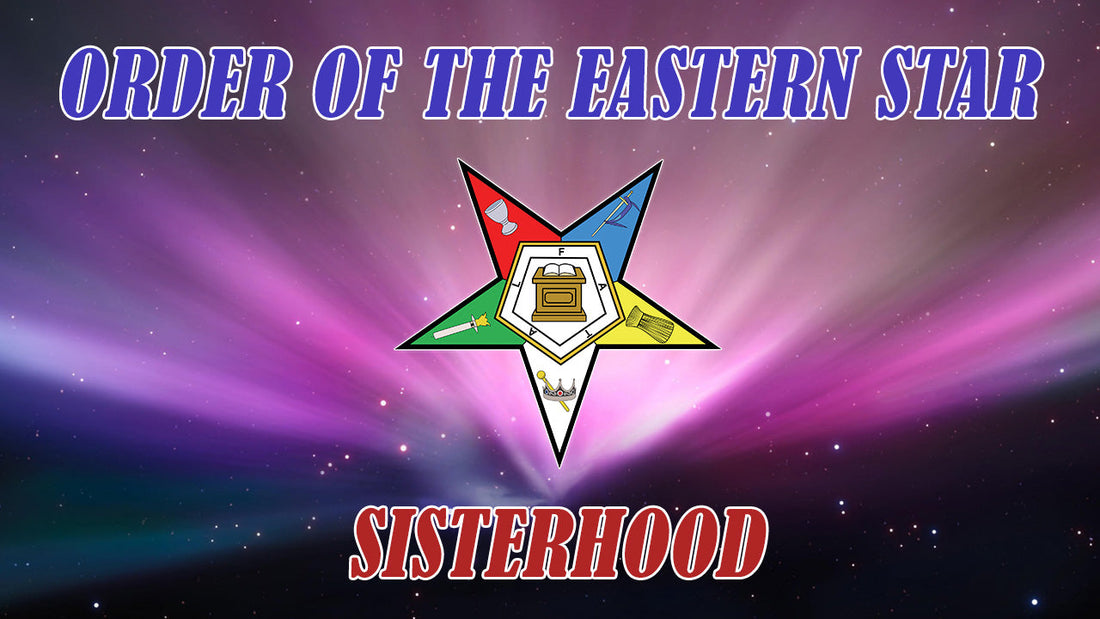
Order of the Eastern Star: The History of Sisterhood OES
Share
Order of the Eastern Star: The History of Sisterhood
The Order of the Eastern Star is a fraternal organization that has played a significant role in the history of women's participation in Masonic-related activities. Its roots can be traced back to the early 19th century, and it has since evolved into a distinct and influential institution with a rich history. Spanning its development from its origins to the present day, this essay will provide a comprehensive overview of the Order of the Eastern Star's history.
Origins and Early Development (19th Century):
The Order of the Eastern Star, also known as the O.E.S., traces its beginnings to the United States during the early 19th century. It emerged as an organization closely associated with Freemasonry, a fraternal order that has its origins in the medieval stonemason guilds of Europe. Freemasonry had gained popularity in the United States during the 18th century, and by the 19th century, it was a prominent fraternal and secret society.
The early development of the O.E.S. was influenced by the desire to involve women in the Masonic experience. While women were traditionally excluded from the Masonic lodges, various Masonic leaders recognized the importance of their participation and sought to create an affiliated organization specifically for women. This desire was motivated by the belief in the moral and spiritual benefits of Masonic principles for women.
The pivotal figure in the creation of the Order of the Eastern Star was Dr. Rob Morris, a Freemason and poet from Kentucky. In the mid-1800s, Morris sought to establish an organization that would allow the female relatives of Freemasons to participate in the principles and teachings of Freemasonry. In 1850, he founded the "Order of the Eastern Star" in order to provide women with a structured and meaningful fraternal experience.
Early Structure and Rituals:
The Order of the Eastern Star's rituals and symbolism were heavily influenced by Freemasonry. The organization adopted a ritualistic approach, with ceremonies that featured symbols, allegorical lessons, and moral teachings. The structure of the O.E.S. was based on a series of degrees, each with its own set of teachings and allegorical stories.
The Order's name itself was derived from biblical references, particularly the Book of Matthew in the New Testament. The star is often associated with the Star of Bethlehem, which guided the Wise Men to the birthplace of Jesus. This connection to biblical symbolism added a spiritual dimension to the Order's rituals.
Expansion and Evolution (Late 19th to Early 20th Century):
Following its establishment, the Order of the Eastern Star grew steadily. It expanded beyond its initial Kentucky roots and established chapters in other states. The organization's commitment to moral and spiritual growth, as well as its sense of community and sisterhood, resonated with many women, leading to increased membership.
One of the significant developments during this period was the formalization of the Order's organizational structure. In 1876, the General Grand Chapter of the Eastern Star was established as the governing body of the organization. This entity provided a centralized structure and helped maintain consistency in rituals and practices across different chapters.
Inclusion and Diversity:
While the O.E.S. was initially founded to include the female relatives of Freemasons, it eventually expanded its eligibility criteria to include women who were not directly related to Masons. This shift in policy was a response to the changing social and cultural dynamics of the time, as well as a desire to create a more inclusive and diverse membership.
Charitable and Community Work:
As the Order of the Eastern Star grew, it became increasingly involved in charitable and community activities. The organization embraced philanthropic initiatives, including supporting orphanages, educational programs, and other charitable endeavors. This commitment to giving back to the community further solidified the OES's reputation as an organization dedicated to moral and social improvement.
Modern Era and Continued Impact:
In the modern era, the Order of the Eastern Star continues to maintain its strong presence. It has expanded internationally, with chapters in various countries around the world. The organization has adapted to the changing times while preserving its core values and rituals. While the O.E.S. retains its historical connections to Freemasonry, it has developed its distinct identity as a fraternal and charitable organization for women.
The impact of the O.E.S. extends beyond its ritualistic and fraternal activities. It has played a role in promoting women's leadership and empowerment, especially within the context of fraternal and volunteer organizations. Through its emphasis on personal growth, moral development, and charitable efforts, the O.E.S. continues to contribute to the betterment of individuals and communities.
In conclusion, the history of the Order of the Eastern Star is a testament to the evolution of fraternal organizations and the changing roles of women within them. From its origins in the 19th century to its current status as an international organization, the O.E.S. has navigated societal changes while remaining committed to its core principles of moral development, community service, and sisterhood. Through its rituals, symbolism, and philanthropic efforts, the Order of the Eastern Star has left a lasting legacy that reflects its enduring significance in the history of fraternal and women's organizations.
